Footballers, stop running 5K in pre-season – do these expert-approved drills instead for match-ready fitness
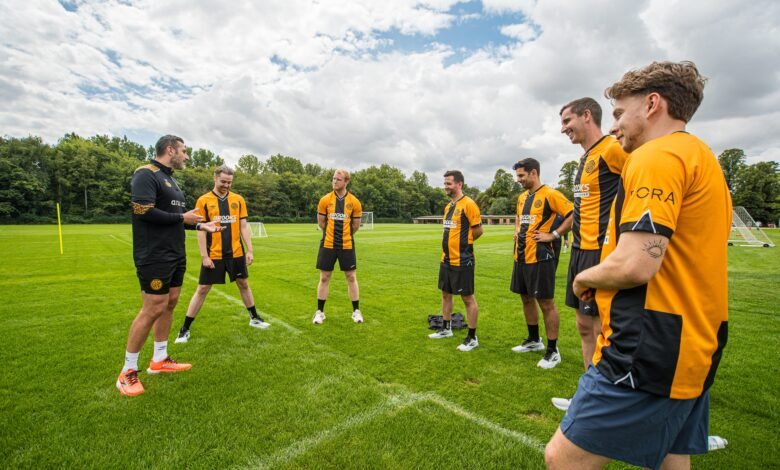
I played football for 20 years. Not particularly well, granted, but most weekends between the ages of seven and 27 I would travel somewhere across the south of England for a match.
As I entered the adult game, I became aware of a pre-season tradition among my fellow players. With the season opener fast approaching, they would run a couple of hell-for-leather 5Ks around their local town then declare themselves fit for duty.
When Brooks Running invited me to train with Cambridge United FC during the off-season, it highlighted how this ritual falls short of preparing you for the rigours of a full 90.
“Say a player covers 10 to 12km per game,” Laurence Bloom, the club’s executive performance lead, says. “If you are doing that as a continuous, steady-state 10k once a week, you’d probably think that was pretty comfortable and you could do it without too much muscle fatigue or soreness.”
However, a game of football is not a continuous effort, he adds. It is a matrix of sprints, accelerations, decelerations and changes of pace, all of which are far more demanding on the body than simply running for 5km in the same direction.
To help you avoid the five kilometre-wide pre-season pitfall, Bloom shared some examples of drills he uses to ensure Cambridge players are ready for the season ahead. You can find four of his favourites below.
A football match by numbers
A football match is unpredictable by nature – that’s why people watch the sport. However, there are consistent trends in player’s movements which can be used to inform their training.
“When we look at the density of a game, the metres per minute for a player will generally be very different depending on the different playing positions,” Bloom says. “A centre-half’s is generally much lower, maybe 100m or 110m per minute, whereas your central midfield players might be up at 120m or 130m per minute.
“So the way those guys condition for games has to be different, depending on their different positional demands. In training, we push the players on things they specifically are going to be more exposed to.”
Players wear GPS tracking vests and do a series of performance tests during pre-season. The resulting data is used to split them into groups, then drills will be prescribed accordingly to suit each group’s needs, speeds and fitness levels.
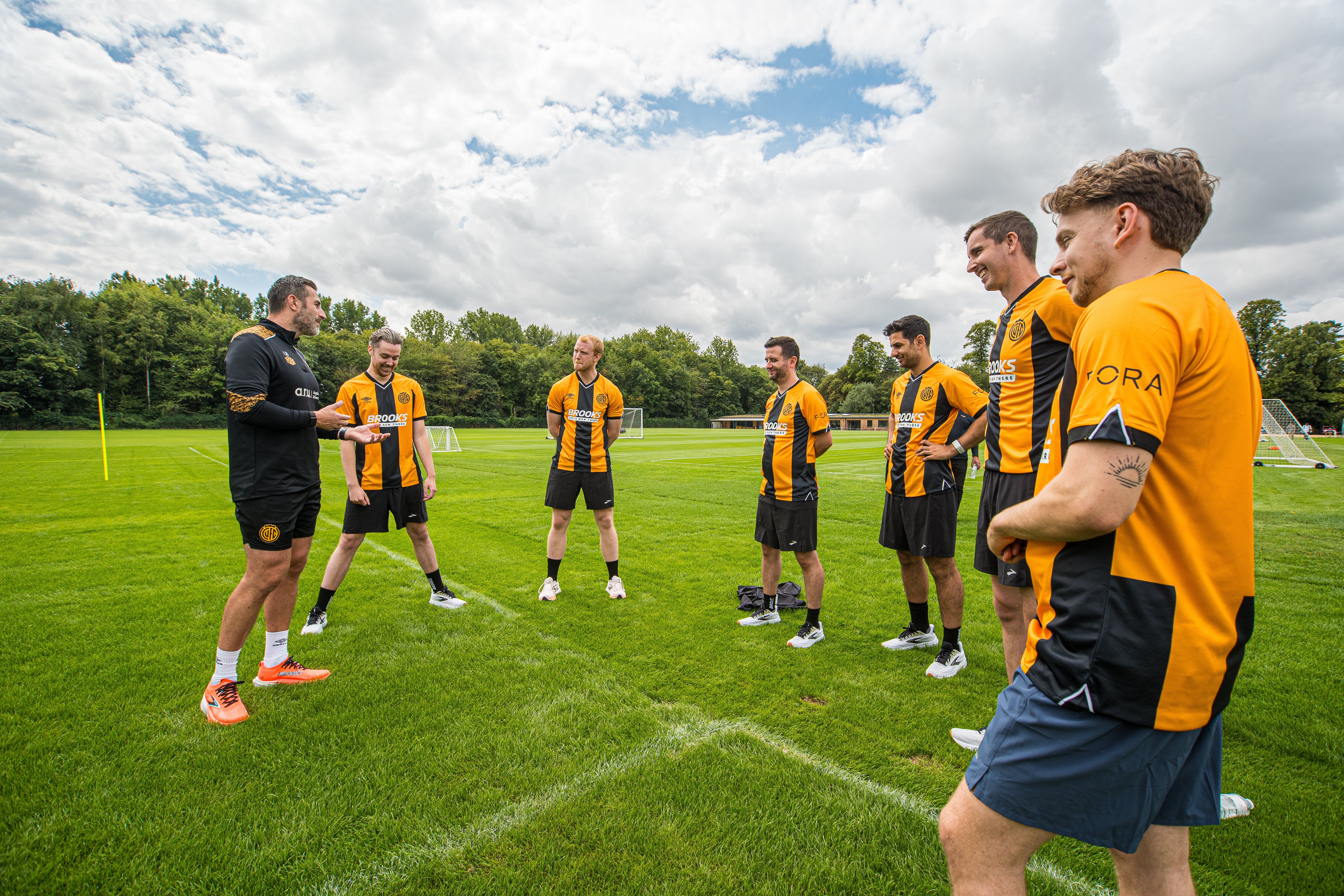
Read more: Mobility expert says you should swap stretching for this exercise to ease tight hips
“In League Two and League One, you’re probably only looking at a maximum of 60 minutes of ball-in-play time per game, and 15-20 per cent of a player’s distance covered will be walking,” adds Bloom. “That’s their recovery time where the demand drops a little bit.
“But then they’ll do 800m to 1,200m of high speed running – anything above 19.8km/h. That’s the stuff that’s really going to push the hamstrings.
“Then on top of that we have actual sprints, which is anything above 25km/h. You might be looking at anywhere between 40 to 60 sprint efforts per game, depending on a player’s position.”
However, the most “metabolically demanding” aspects of a game are the short, intense bursts of effort, Bloom says. This might be to press the opposition, close someone down or chase a through ball, with players completing roughly 150-200 accelerations and 100-150 decelerations per game.
“Those decelerations are what cause the most muscle damage,” Bloom explains. “They generally cause more fatigue and carry more risk of injury because of the higher demands on the body.”
For this reason, players include strength training exercises such as Romanian deadlifts and Nordic curls to reinforce the joints, muscles, bones and tendons in these higher risk areas.
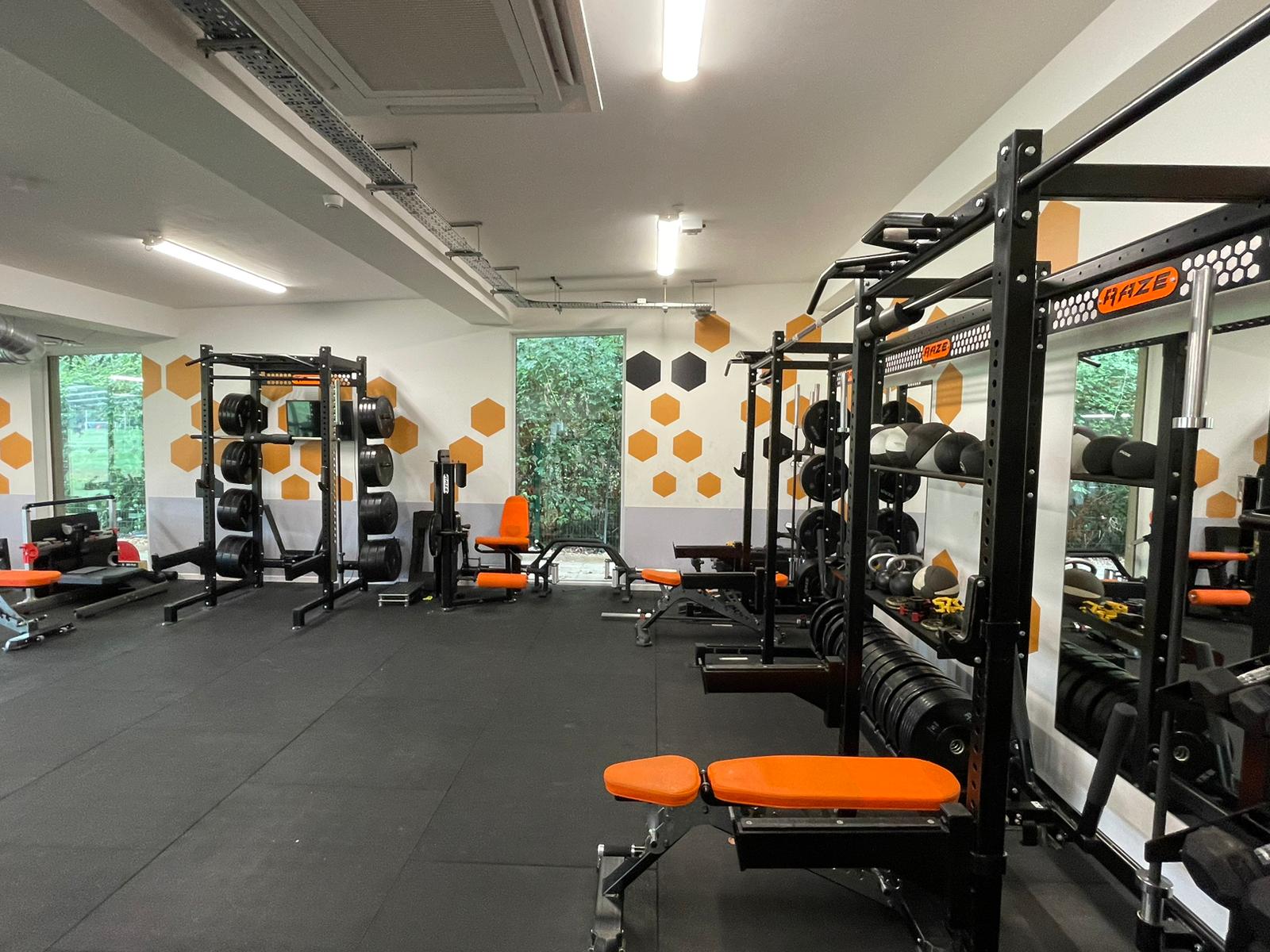
Read more: Swap the gym for this trainer’s six-move kettlebell workout to build full-body strength at home
Bloom also monitors the internal and external load players are subjected to throughout a season. “The effect the game has on the body – on things like muscles, joints, tendons etc. – is what we call external load,” he says. “Internal load includes things like how your heart rate responds to the load you’re putting through your body.
“This is quite a generic guide, but we tend to see average heart rates of about 160 to 180 beats per minute across 90 minutes – about 80 to 90 per cent of a player’s maximum. In the highest intensity periods of the game, you’ll see heart rates rise to 190 to 200 beats per minute.
“If you look at heart rate zones, players are spending most of the game in zone four and zone five, which is a large metabolic demand through the body.
“All of a sudden, when you put that into a three-game week, you’re going to see players hitting 30km-plus of total distance, over 2,000m of high-speed running, and then you’re tripling their accelerations and decelerations. That’s why, when we go into these high game periods, you generally see injury rates go up.”
To counteract this, the club focusses on preparing players physically through specific drills and exercises, then optimising recovery protocols to ensure players are as ready as they can be for each game. You can find four examples of these below.
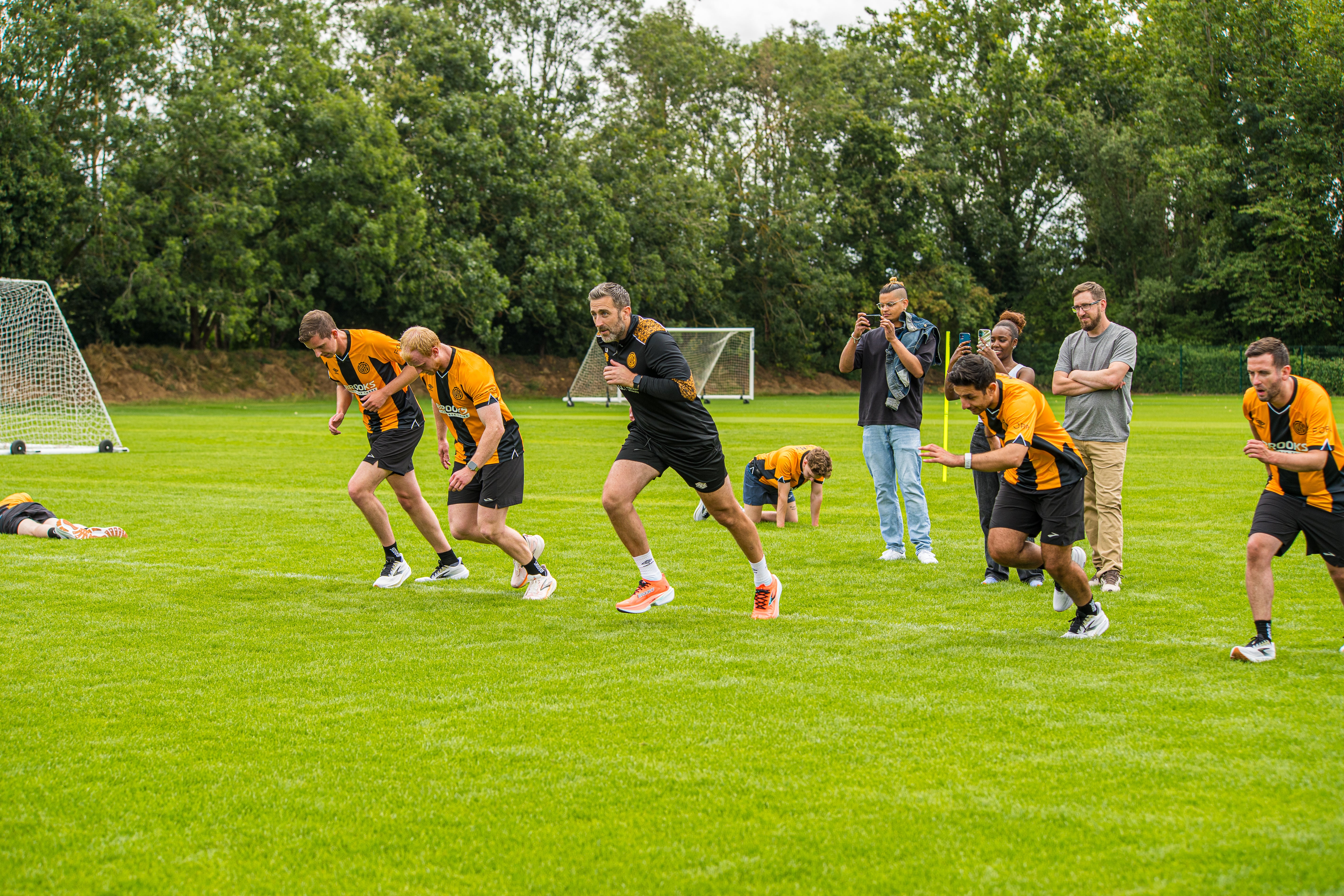
Read more: I tried swapping the gym for Pilates – and I was impressed with the results
Drill one: 4×4
Repeat the sequence below for four total rounds:
- Run for four minutes
- Recover for two minutes
“Nowadays pre-season starts in the off-season – we have a programme to follow,” centre-back Kelland Watts explains. “This summer we had seven weeks off, and the first two or three weeks is all your own time, but then there are four weeks of recorded sessions where we are wearing a GPS vest. That gets your baseline fitness back to where it was.”
The 4×4 protocol is one of the prescribed drills.
“Total distance would be around 4.5km to 5km, depending on the player,” Bloom says. “In terms of max speed, you’re probably working at 50-60 per cent, so this wouldn’t be classed as high speed running – it’s more of an aerobic drill. But heart rates tend to get quite high.”
Players also do a lot of slower, steady-state efforts to lay strong foundations for their fitness – namely, their aerobic capacity and the tissue tolerance in their lower limbs. Later in pre-season, they are introduced to a wide range of runs and drills, including higher-intensity shuttle runs and agility exercises.
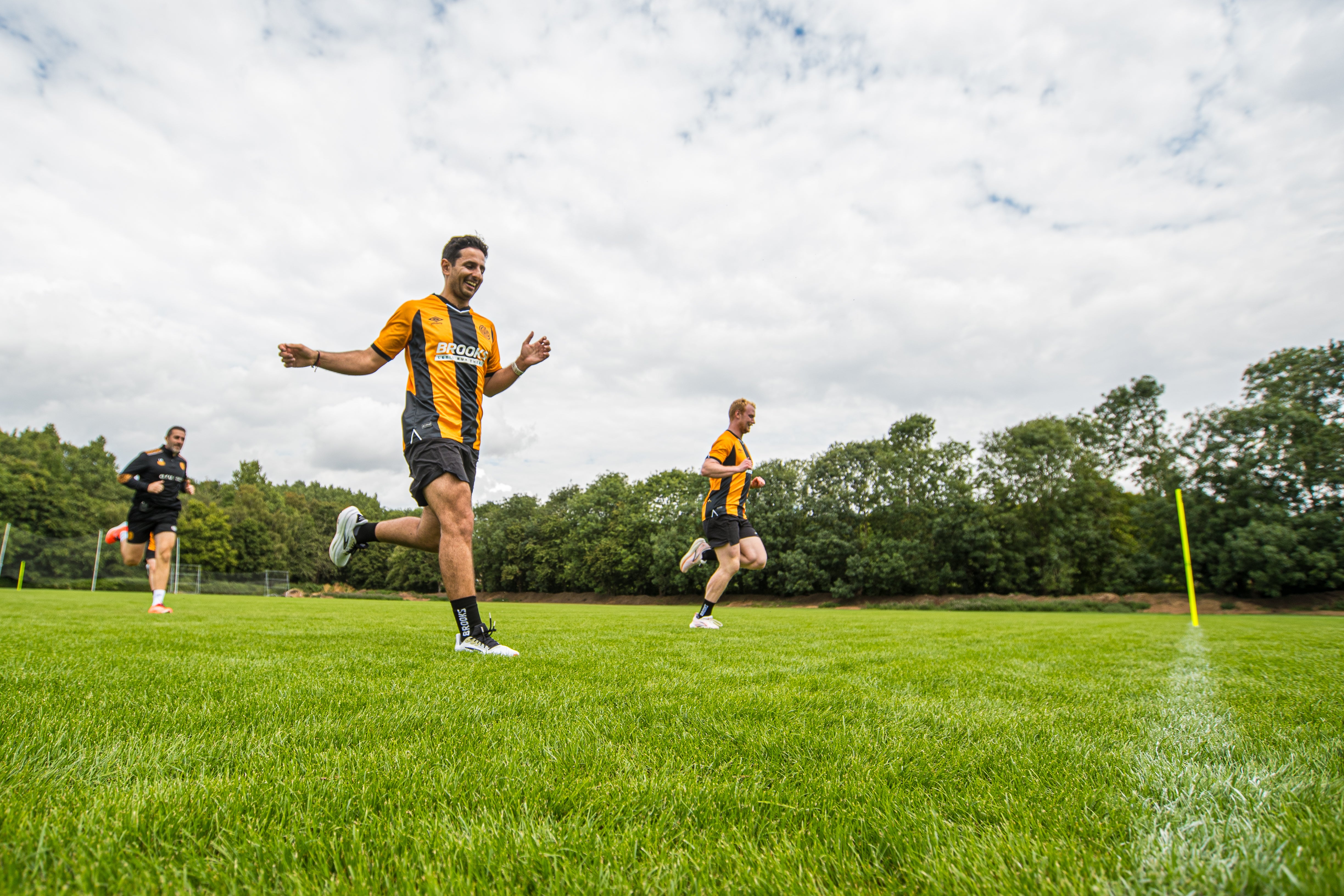
Read more: I tried a two-move bodyweight workout from endurance swimmer Ross Edgley, and it was surprisingly fun
Drill two: The 30/15 yo-yo test
- Set three cones in a straight line, each 20m apart.
- Run between the cones until you have covered 60m – you have 30 seconds to do this.
- Once the 30 seconds is up, rest for 15 seconds
- Repeat this sequence, starting from the cone you ended your last round at, but add 20m to the distance you need to run each round.
- Continue until you are unable to complete the prescribed distance in the allotted time.
Players were welcomed back to training for the 2025/26 season with this delightful drill. Data from the test, alongside many other data points, was then used to inform the training prescriptions given to individual players going forward.
“On the first day back the players are exposed to quite a lot of rigorous fitness testing,” says Bloom. “We’ll take a whole load of measurements on strength, speed, power and endurance. They’ll also do a physio screening, a neuromuscular screening, then we’ll take them on the pitch.
“From the results, we can be [individually] prescriptive on their running distances when we’re doing high-intensity running drills. Then what we do is make it more sport specific by combining these with football training drills like intensity possession or game-based drills.”
Captain Michael Morrison is no stranger to the demands of pre-season training. The 37-year-old has previously endured forest runs with Gary Megson at Sheffield Wednesday and a brutal sequence of shuttles straight into eight laps of the pitch under Nigel Pearson at Leicester City.
“Whatever the test is, you’re always on the start line with butterflies wondering if you’ve done enough over the summer to keep up with everybody else,” he laughs.
“I hadn’t done this one before so I was a bit sceptical. Normally you know the point [where it’s acceptable, or respectable, to drop-out]. We had no goalkeepers in and I’m like the oldest player now, so I could tell everyone was looking and thinking, ‘When’s Morro going out? I don’t want to go out before him’. But I held my own – it went alright.”
“When it starts getting hard, you’ve already been running for about 10 minutes and your heart rate is already sky high,” fellow player Watts adds. “But some players were going there and back [40m between the cones] six times by the end.”
Bloom says that pushing players to their limit is “not the best practice to have from a sports science point of view”. However, this drill serves as a way to demonstrate, rather than develop, fitness. It has a bonus benefit too.
“Another part of football is mental resilience,” Bloom says. “Managers tend to like this one – they want to see players run until they’re at capacity, then dig in and work some more. When you’re under pressure in a game in the 90th minute, managers want those players who are going to work hard.”
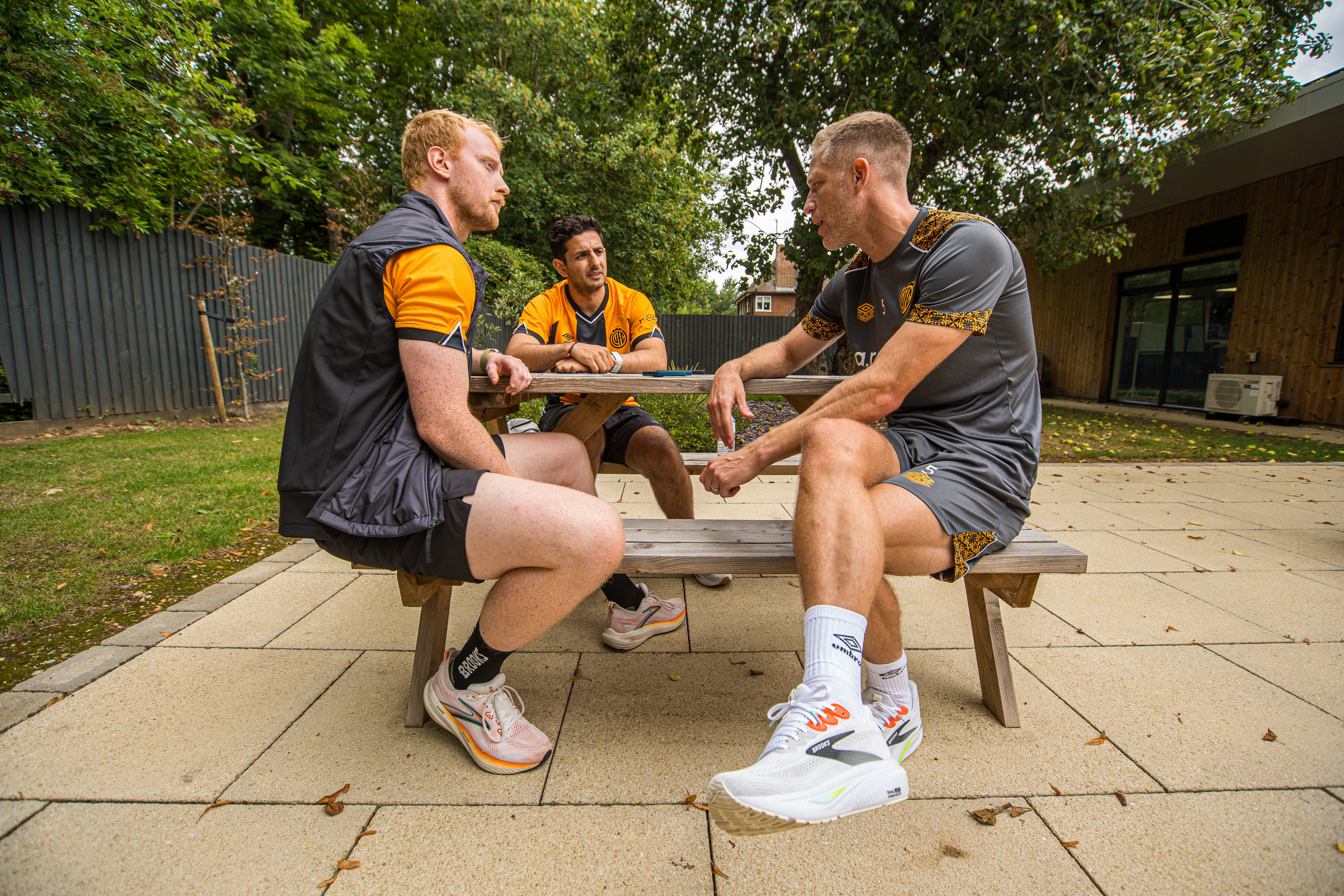
Read more: I’m a trainer specialising in longevity – these are the five changes that have the biggest impact on my clients
Drill three: Aerobic base-building shuttles
Complete the sequence below four times:
- 60m shuttle x1
- Rest for 10 seconds
- 60m shuttle x2
- Rest for 10 seconds
- 60m shuttle x3
- Rest for 60 seconds
Bloom uses this drill to build VO2 max, otherwise known as aerobic capacity – a person’s ability to take in and use oxygen during exercise. It will often be incorporated into larger training sessions, with players alternating between these shuttles and game-based drills with the ball.
“From what we’ve seen, players with a higher VO2 max generally have higher outputs in games and also recover better between high-intensity actions,” he explains.
“This is the sort of drill we’re doing with the players to get their heart rate up, increase their internal load and try to condition the muscles in the posterior chain like the hamstrings to deal with those high speed actions. Yes, we’re trying to build fitness, but we’re also trying to improve muscle capacity and endurance.”
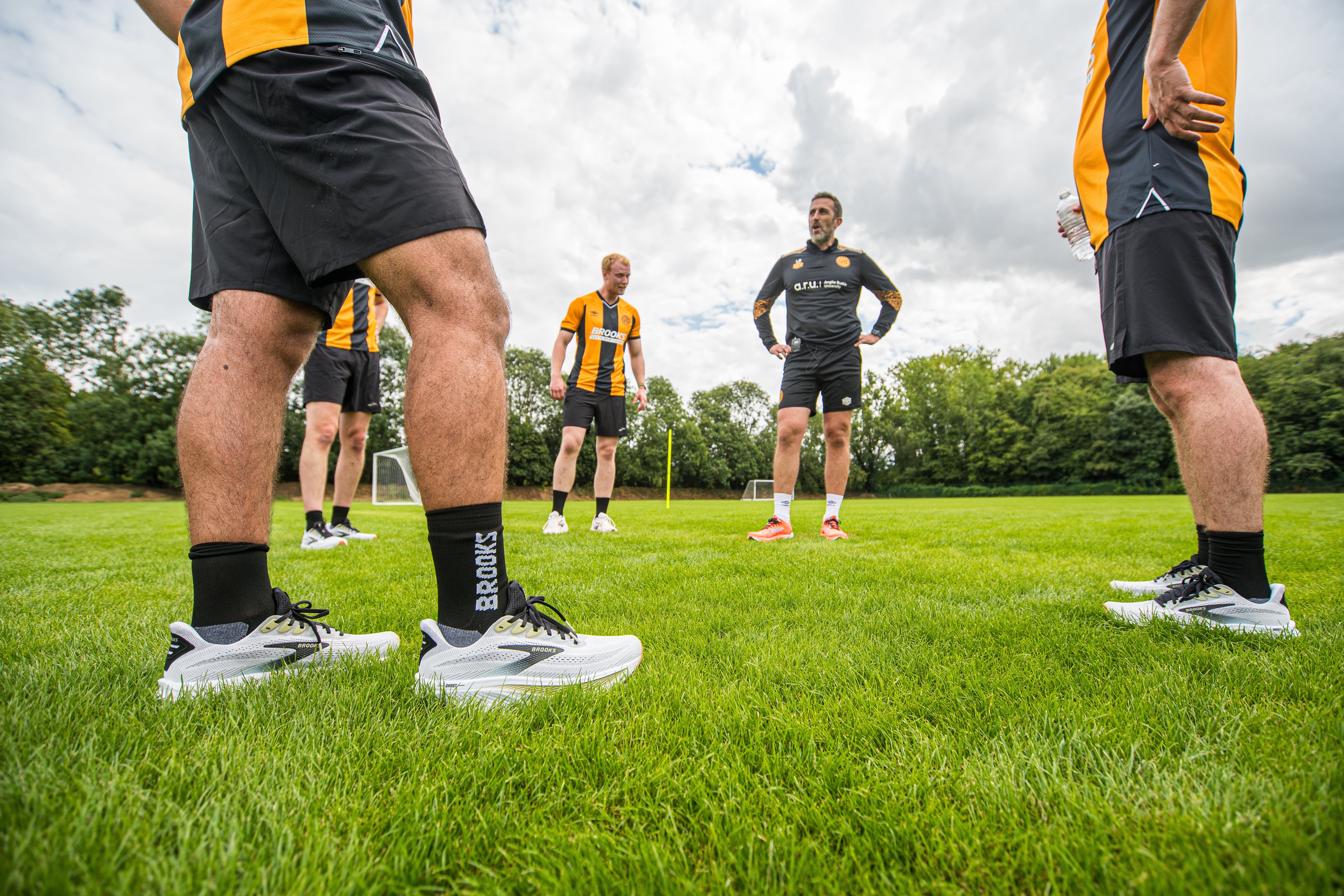
Read more: I tried a CrossFit Games champ’s three-move workout – it left me struggling to climb the stairs
Drill four: Match running simulation
Complete the sequence below five times, then rest for two minutes and repeat. Do this for three total rounds. Bloom also provides a time to aim for when completing each section, which is placed in brackets at the end of each instruction.
- Start at one of the corner flags then, following the touchline, complete strides to the halfway line (eight seconds).
- From the halfway line, walk to the corner flag you’re facing (32 seconds).
- From the corner flag, sprint diagonally to the edge of the 18-yard box (three seconds).
- Walk along the edge of the penalty area (20 seconds).
- Sprint to the nearest corner flag (three seconds).
- From the corner flag, jog along the touchline to the halfway line (15 seconds).
- Stride from the halfway line to the corner flag you are facing (eight seconds).
- Walk diagonally to the edge of the six-yard box (20 seconds).
- Sprint along the edge of the six-yard box (four seconds).
- Walk diagonally back to the starting position at the corner flag (20 seconds).
This drill was concocted during the Covid lockdowns to help players simulate the undulating intensities of a match while training solo.
“Ultimately, we’re trying to build robustness and tolerance capacities in the muscle so, from an injury prevention point of view, players can deal with the demands of the game better,” says Bloom.
“Can they produce more sprints in a game? Because they are the actions that are going to have the greatest effect. Most goals are scored and conceded after a high-intensity action – either someone making a sprint into the box or sprinting back to make a recovery tackle. That’s how games are often won or lost in the latter stages.”
Having these attributes finely tuned also benefits the U’s style of play, Bloom explains. “The way we tend to play is a low to mid-block when we’re out of possession. Then we’re a counter attacking team, so we want to be able to break fast when we win the ball back.
“And we want to be able to finish games strongly. Across all leagues, 25 per cent of goals are scored in the last 15 minutes of a game. There could be a lot of factors involved in that, from squad selection and substitutes to formation and tactics, but there is also a big physical element. If teams are fatigued, they get overrun by the opposition.”
Read more: Five stretches you should be doing every day according to a flexibility expert




